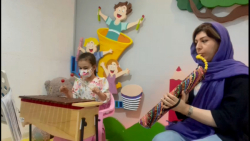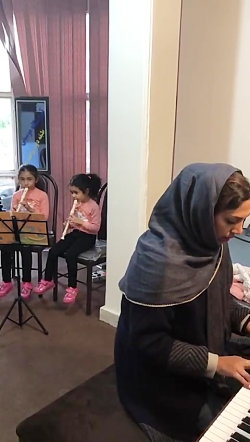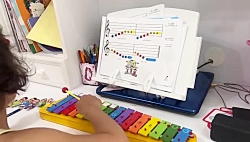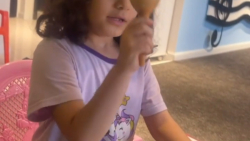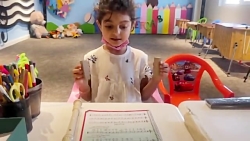Online Xylophone Child Course
More Links
- Accordion
- Cajon
- Cello
- Clarinet
- Classic Violin
- Double Bass
- Electric Guitar
- Flute
- Guitar
- Handpan
- Hangderam
- Harmonica
- Harmonica
- Harp
- Lakota Fluet
- Melodica
- Persian Tang
- Piano
- Saxophone
- Violin Alto


Maryam Fazelinasab - Xylophone Child
Tuition : 750,000 toman
Parastoo Khandani - Xylophone Child
Tuition : 750,000 toman
Aryana Shirangi - Xylophone Child
Tuition : call for price
Sahar Rashidi - Xylophone Child
Tuition : call for priceStudents Videos
Xylophone Child
A brief introduction with xylophone instrument
The xylophone instrument is a kind of percussion which is made of wood or metal plates arranged in order of their heights. It is played with small sticks-something like a hammer-(malt). Each plate is set to a specific note, you can make different melodies and rhythms by hitting the small hammer to different plates.
Xylophone is relatively simple and easy to learn for playing; and because of this, it is mostly used as an educational assessment for children. However, xylophone is played by professional musicians in a variety of music, including classical music, jazz and folk music.
The types of xylophone
There are many types of xylophones in various sizes and shapes, but the most common type is the two-octave xylophone with 26 plates that covers two full octaves. There are bigger and smaller xylophones. Some xylophones also have plates that include chromatic notes; which are the kinds of notes that are between the main (white) notes in the musical scale.
How to play xylophone
To play a xylophone, first you need two mallets and a bit practice. In the very first step, you should hold each mallet in one hand. You can hold them vertically or horizontally, keeping your hands relaxed and your wrists slightly bent. Secondly, gently hit the mallet on one of the xylophone’s plates. Where you hit the plate affects the loudness and the tone of the sound. you need to hit the plates hard to create a clear and expressive sound. You can tap the plates with the tip or the edge of the mallet. In the third step, you should tap different parts of the plates to play different notes. Each plate is tuned to a specific note. By following the notes of a song, you can play the melody with a xylophone. In the fourth step, you need to keep a steady rhythm to play smooth melodies. You can keep the rhythm by using a metronome or by counting in your head. Also you can start with simple rhythms at first and gradually increase your speed and level step by step.
The advantages of playing xylophones
There are many advantages in playing xylophones for children and adults; such as:
- Strengthen fine motor skills: playing xylophones helps you with hand-eye coordination and fine finger movements.
- Strengthening memory: playing melodies helps you to strengthen memory, memorizing things and learning skills.
- Stress reduction: playing music can help you to reduce your stress and anxiety.
- Increase creativity: playing xylophones helps creativity and innovation.
- Strengthening the sense of rhythm: playing xylophones helps you to strengthen the sense of rhythm and sense of time.
If you're looking to buy xylophones, you can find them at most music stores. While you’re choosing one, you should pay attention to the size, number of plates and material of the plates. You should also make sure that the xylophones are made of good quality and their mallets are strong and durable.
Teaching a xylophone to children
Teaching a xylophone to children has many benefits; Including strengthening fine motor skills, memory, creativity and sense of rhythm. There are many ways to teach children, including:
- Face-to-face classes: This method is the most traditional and effective method of teaching xylophone. In face-to-face classes, children can have suitable guidance, direct feedback from their teacher and learn alongside other children in a social environment.
- Online classes: online xylophone training can also be a good way to learn this instrument. These classes are more flexible; Because children can be present in them at any time and any place they want.
- Use a high-quality instrument. The high-quality instrument creates a clear and expressive sound. Also it will be easier for children to play.
- Use creative teaching methods. Children learn more through having fun in games and entertainment; So use games, songs and creative activities to teach them xylophone.
- Learning any new instrument takes time. be patient and encourage children to keep practicing.
- Celebrate their successes. Any progress your children make in playing xylophone will motivate them to keep practicing.
Xylophones are almost simple and easy to learn for playing. Anyone can learn playing a xylophone with a little practice. In addition to the methods we described earlier, there are various other resources for learning xylophone, including:
- Books: There are many instructional books in xylophone playing field that can help you learn the basics of playing this instrument.
- Websites: There are many educational websites that contain lessons, exercises and other useful resources.
- Videos: There are many tutorial videos on YouTube and other platforms for video that can help you learn how to play certain songs and different techniques.
In today's fast-paced world, many of us are looking for some ways to relieve stress and anxiety then instead of that, inject freshness into our lives. Playing xylophone, this simple and lovely instrument can be an ideal option to achieve this goal. Playing this instrument helps adults take some distance from the noisy world and daily worries, use it as a shelter for their inner peace and save their souls.
Learning to play xylophone empowers your memory and help you memorize information and learn new topics. Also, playing this instrument improve your creativity skills and helps you to create new ideas.
Online xylophone class
Online xylophone classes are a great way to learn this instrument at home. These classes represent more flexibility; Because you can be in them at any time and any place you want.
Some advantages of the online classes are:
- Flexibility: You can be present in the classes whenever and wherever you want.
- Access: You can be in the classes whether you’re at home or not. Actually you have the access to your classes from all over the world.
- Cost: Xylophone online classes are usually cheaper than face-to-face classes.
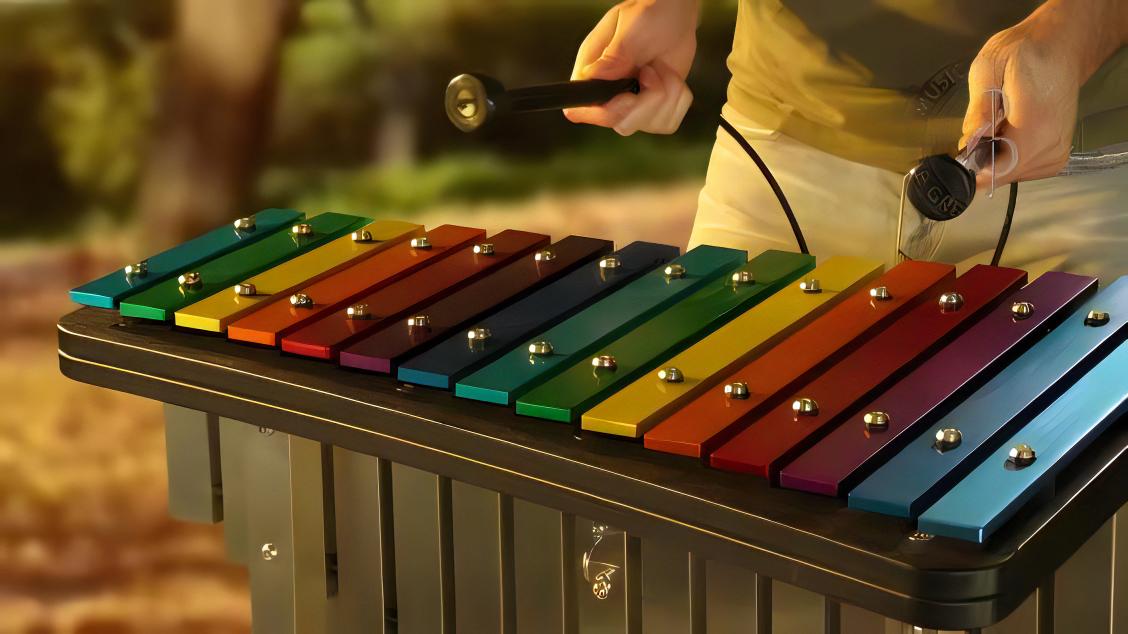
Orff class
Orff class is a method of teaching music to children that uses percussion instruments, singing and movement. This method was developed by Carl Orff, a German composer and a music teacher, in the 1930s. The purposes of Orff children's music class are:
- Strengthening children's musical skills: Children learn to recognize and play notes, rhythms and melodies in Orff classes.
- Enhancing creativity skills: Children in Orff classes are encouraged to create and play their own music.
- Enhancing motor skills: Children in Orff classes use their body movements to play music and express their musical ideas.
- Strengthening social skills: children work together, make and play music in Orff classes. This will help them improve their social skills.
Learning xylophone at home
Learning xylophone at home is a great way to introduce children to music and help them learn musical skills. There are different resources for training xylophone at home, which have been mentioned in detail earlier.
Teaching xylophone to Iranian children
There are different sources for teaching xylophone to Iranian children in Iran; Including:
- Face-to-face training, online training, Persian books and websites that can help Iranian children learn xylophone at home.
Xylophone instrument is simple yet attractive so it can be fun and educational for people of all ages. Learning to play xylophone has many benefits for your physical and mental health; including improve your memorizing, creativity and fine motor skills. With so many learning resources available online and in person, learning to play xylophone is easier than ever. Whether you are a child or an adult, you can learn to play this beautiful instrument with a little practice and patience.



